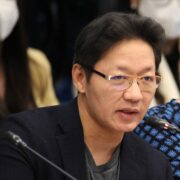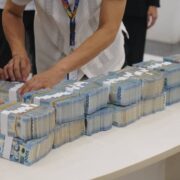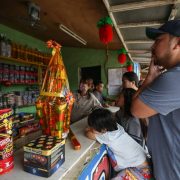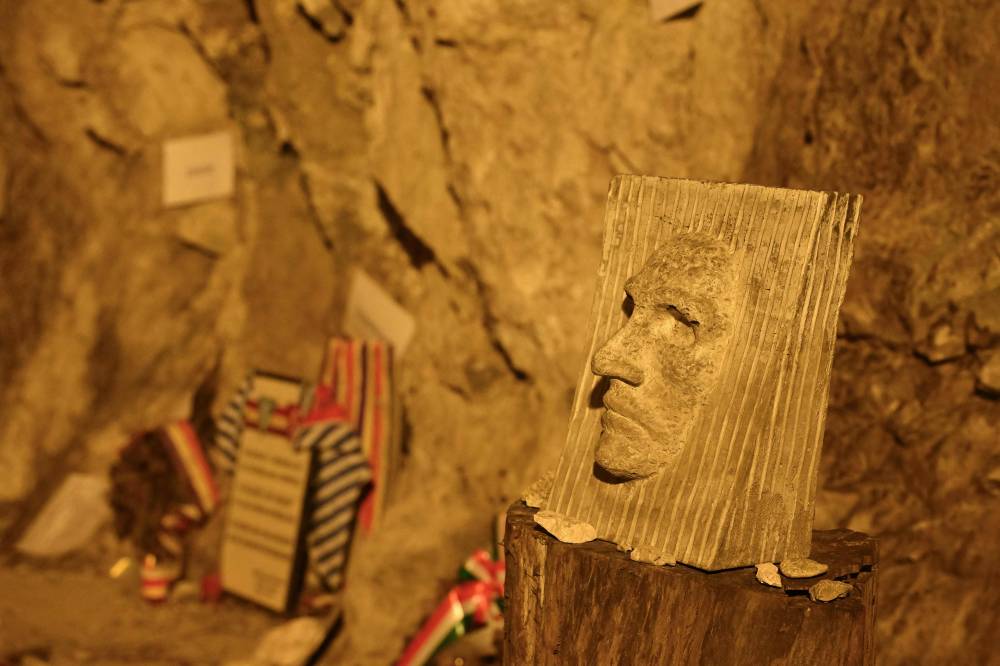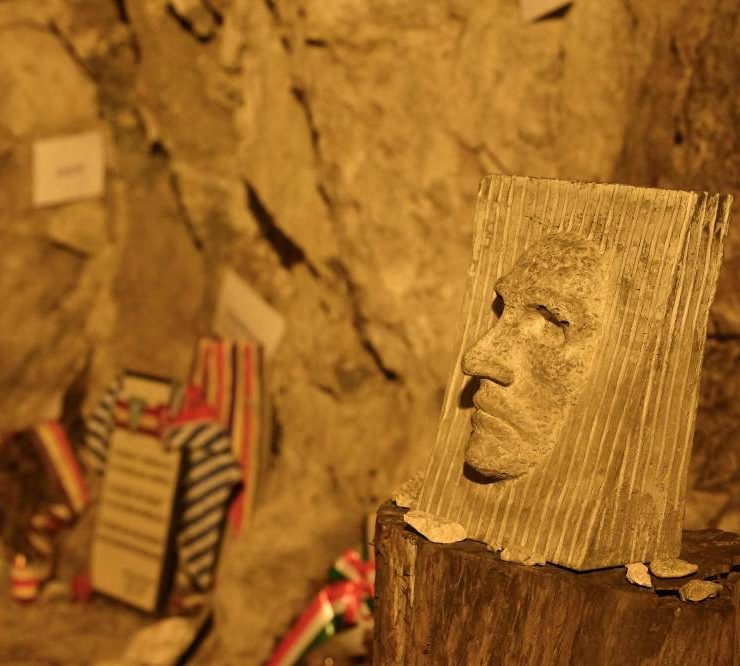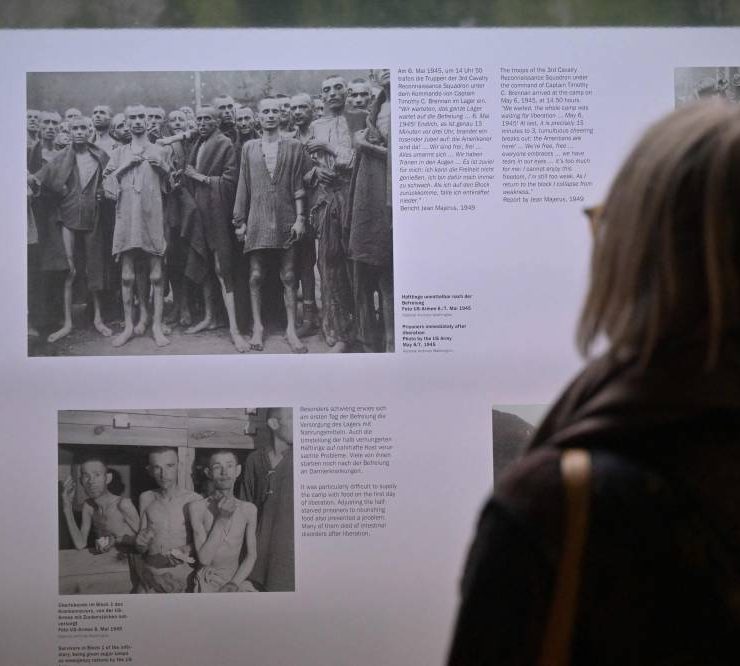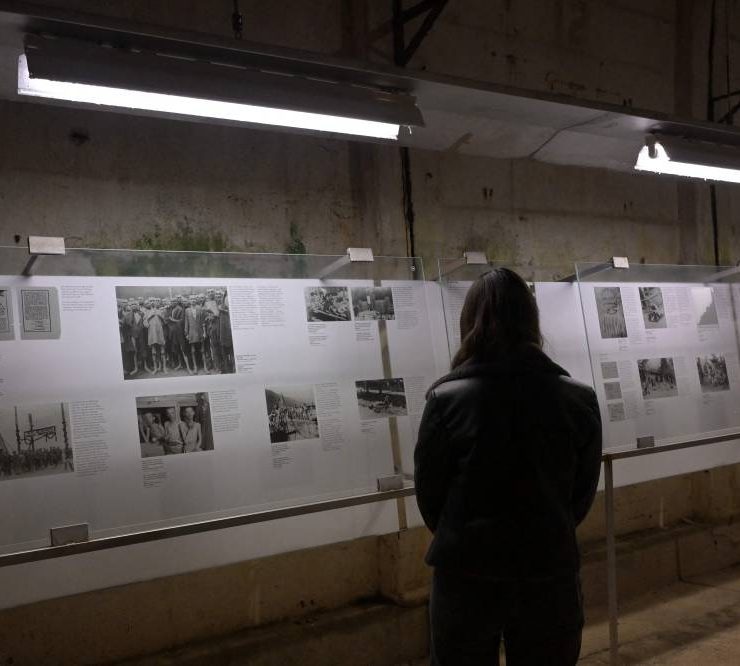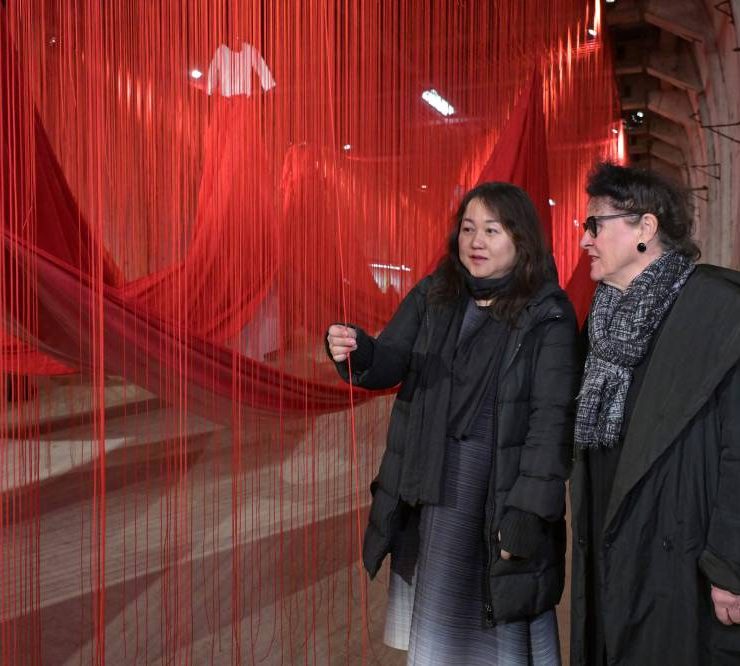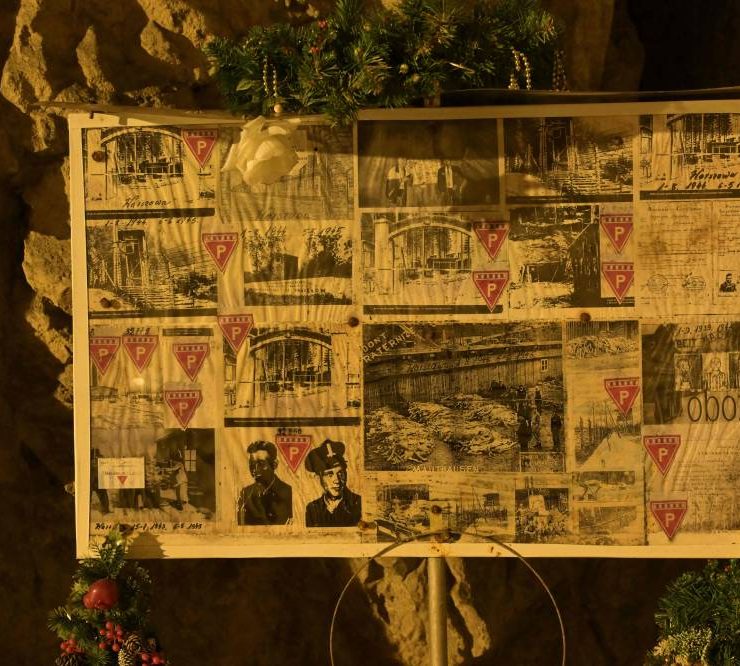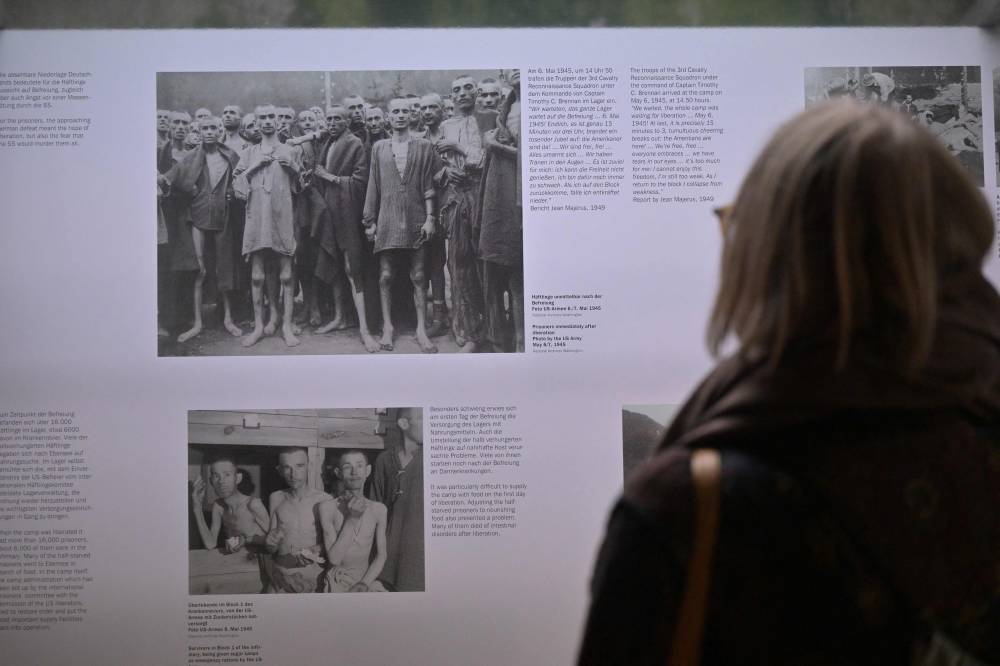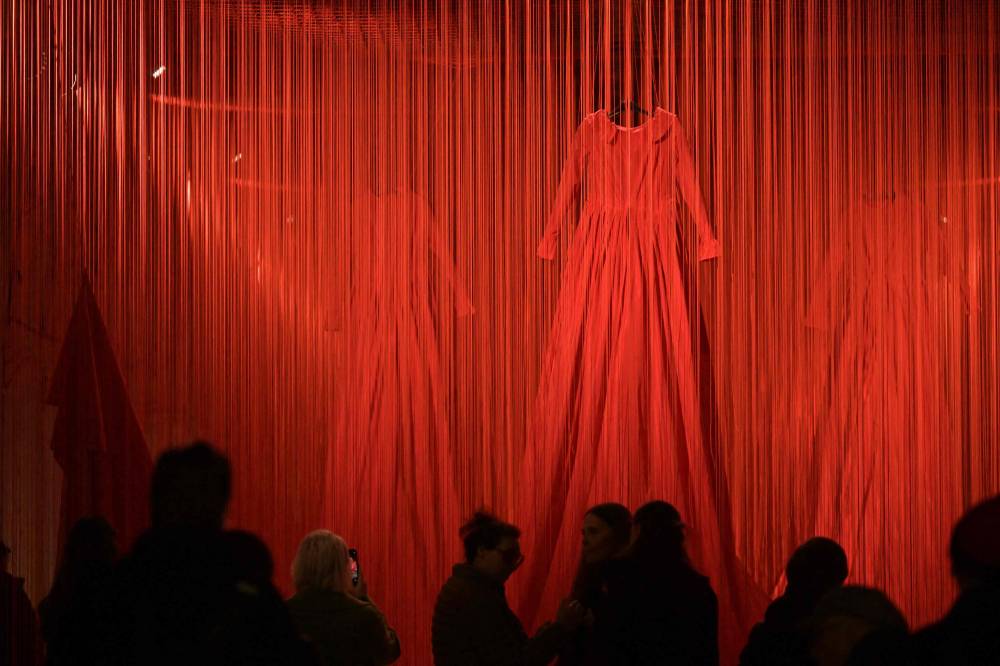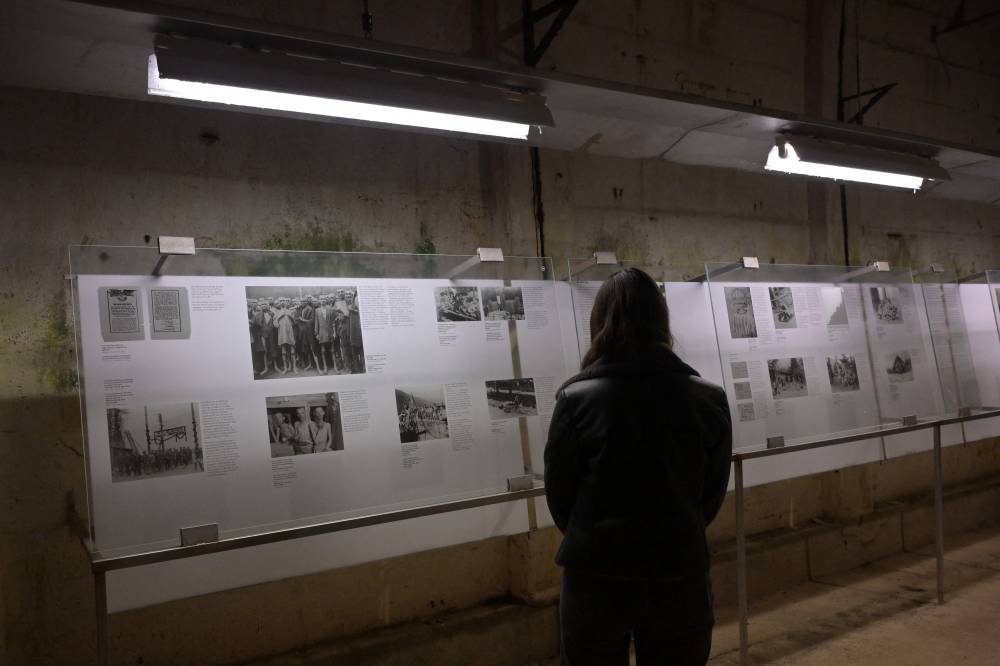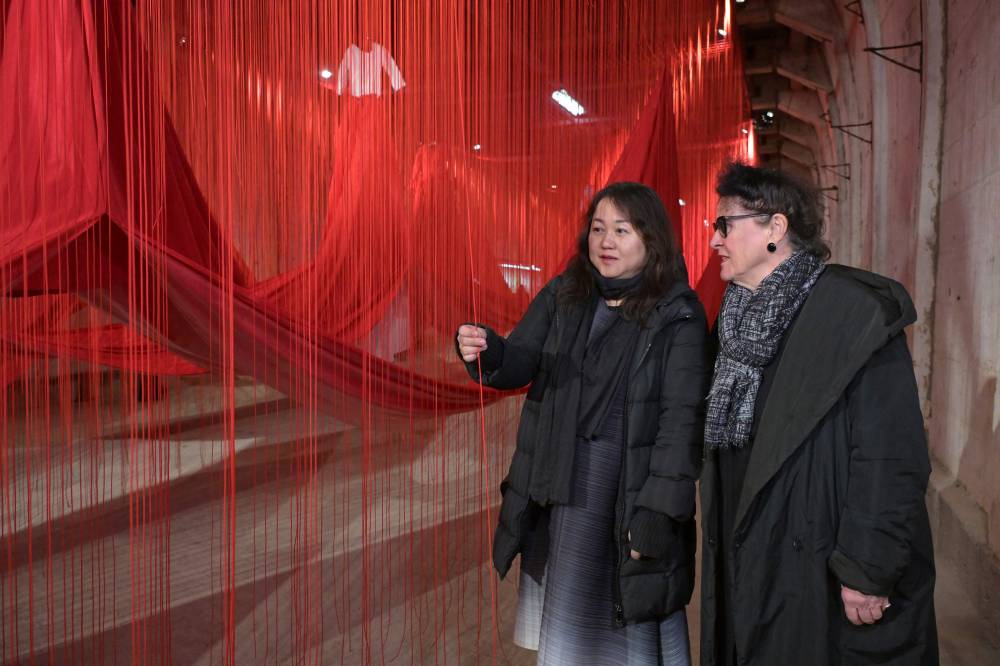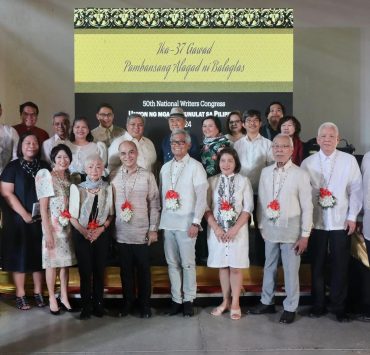‘Empty body’ art in tunnels dug by Austria concentration camp inmates
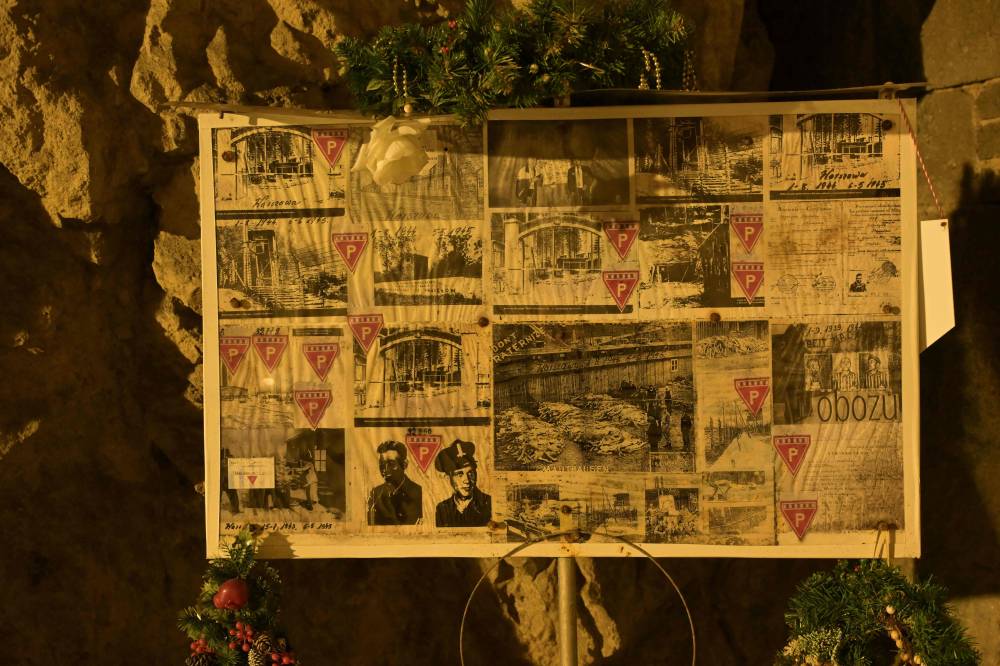
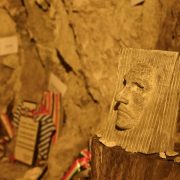
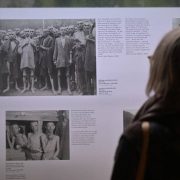
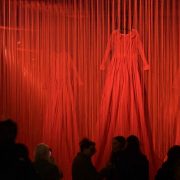
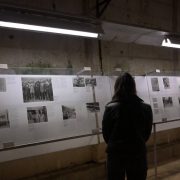 +2
+2 ‘Empty body’ art in tunnels dug by Austria concentration camp inmates
Pieces of the permanent exhibition are pictured in the tunnel of the former concentration camp of Ebensee in the Salzkammergut region, 250 km west of Vienna, Austria, on April 26, 2024, during the opening of Japanese artist Chiharu Shiota's installation. An installation by internationally-renowned Japanese artist Chiharu Shiota, 51, is on view until September 30, 2024 in Salzkammergut, elected European Capital of Culture in 2024, in a tunnel dug in 1943. (Photo by KERSTIN JOENSSON / AFP)
‘Empty body’ art in tunnels dug by Austria concentration camp inmates
A visitor stands in front of pieces of the permanent exhibition in the tunnel of the former concentration camp of Ebensee in the Salzkammergut region, 250 km west of Vienna, Austria, on April 26, 2024, during the opening of Japanese artist Chiharu Shiota's installation. An installation by internationally-renowned Japanese artist Chiharu Shiota, 51, is on view until September 30, 2024 in Salzkammergut, elected European Capital of Culture in 2024, in a tunnel dug in 1943. (Photo by KERSTIN JOENSSON / AFP)
‘Empty body’ art in tunnels dug by Austria concentration camp inmates
Visitors stand in front of an installation of red ropes and empty dresses floating in the tunnel of the former concentration camp of Ebensee in the Salzkammergut region, 250 km west of Vienna, Austria, on April 26, 2024, during Japanese artist Chiharu Shiota's exhibition's opening. An installation by internationally-renowned Japanese artist Chiharu Shiota, 51, is on view until September 30, 2024 in Salzkammergut, elected European Capital of Culture in 2024, in a tunnel dug in 1943. (Photo by KERSTIN JOENSSON / AFP)
‘Empty body’ art in tunnels dug by Austria concentration camp inmates
A visitor stands in front of pieces of the permanent exhibition in the tunnel of the former concentration camp of Ebensee in the Salzkammergut region, 250 km west of Vienna, Austria, on April 26, 2024, during the opening of Japanese artist Chiharu Shiota's installation. An installation by internationally-renowned Japanese artist Chiharu Shiota, 51, is on view until September 30, 2024 in Salzkammergut, elected European Capital of Culture in 2024, in a tunnel dug in 1943. (Photo by KERSTIN JOENSSON / AFP)
‘Empty body’ art in tunnels dug by Austria concentration camp inmates
Elisabeth Schweeger, Artistic Director European Capital of Culture Bad Ischl Salzkammergut 2024 (R) and Japanese artist Chiharu Shiota are pictured in front of the installation of floating red ropes and empty dresses at the exhibition in the tunnel of the former Ebensee concentration camp in the Salzkammergut, 250 km west of Vienna, Austria, on 26 April 2024. An installation by internationally-renowned Japanese artist Chiharu Shiota, 51, is on view until September 30, 2024 in Salzkammergut, elected European Capital of Culture in 2024, in a tunnel dug in 1943. (Photo by KERSTIN JOENSSON / AFP)
‘Empty body’ art in tunnels dug by Austria concentration camp inmates
Pieces of the permanent exhibition are seen in the tunnel of the former concentration camp of Ebensee in the Salzkammergut region, 250 km west of Vienna, Austria, on April 26, 2024, during the opening of Japanese artist Chiharu Shiota's installation. An installation by internationally-renowned Japanese artist Chiharu Shiota, 51, is on view until September 30, 2024 in Salzkammergut, elected European Capital of Culture in 2024, in a tunnel dug in 1943. (Photo by KERSTIN JOENSSON / AFP)
EBENSEE, AUSTRIA—An exhibition of empty dresses and blood red ropes hanging inside an underground tunnel dug by concentration camp inmates in Austria during World War II seeks to bring the public closer to the “unspeakable” in memory of the victims of Nazism, its creators say.“We can bring what happened here closer to people…It is possible to perhaps make the unspeakable more tangible for people,” Wolfgang Quatember, manager of the Ebensee camp memorial and museum, told Agence France-Presse (AFP).
The Ebensee concentration camp was erected as a labor camp in the picturesque mountainous region around Salzburg in Austria, the country where Adolf Hitler was born and which he annexed in 1938.
More than 27,000 men from 20 different nationalities, a third of them Jewish, were imprisoned at Ebensee between 1943 and 1945.
The inmates were forced to dig underground tunnels to be used to research and develop missiles—plans which were never carried out.
More than 8,000 people died there, with the tunnels still today “proof of forced labor,” according to Quatember, who described the exhibition, which opened last week, as a “balancing act” to respectfully honor the memory of those at the concentration camp.
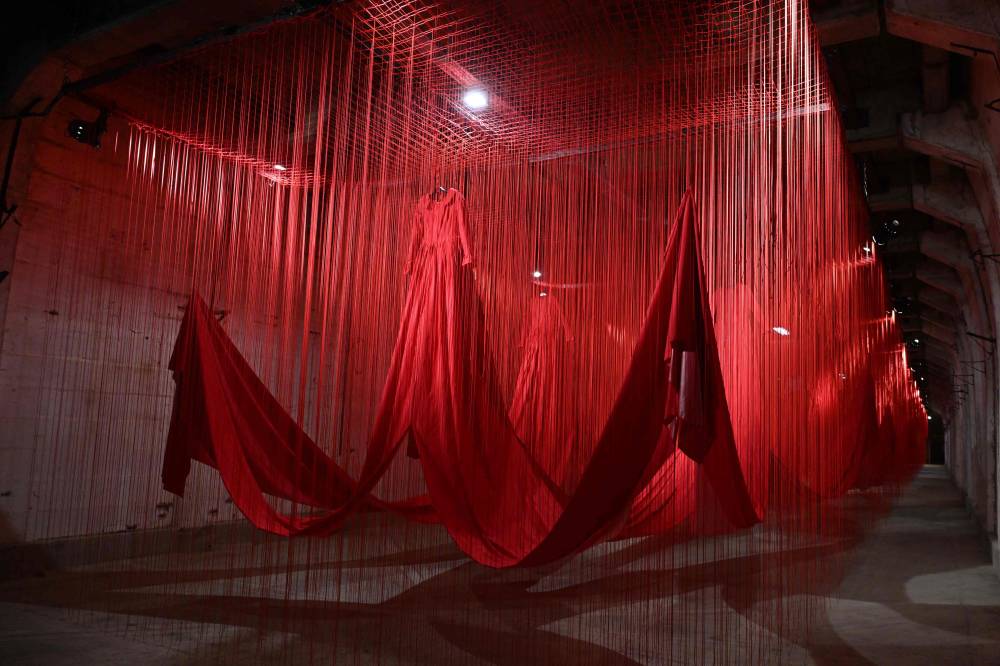
Conceived by internationally renowned Japanese artist Chiharu Shiota, 280 kilometers of red ropes have been suspended from the tunnel ceiling.
The ropes connect immense ghostly dresses, seemingly floating in the air like “an empty body,” symbolizing “absence in the existence,” according to Shiota.
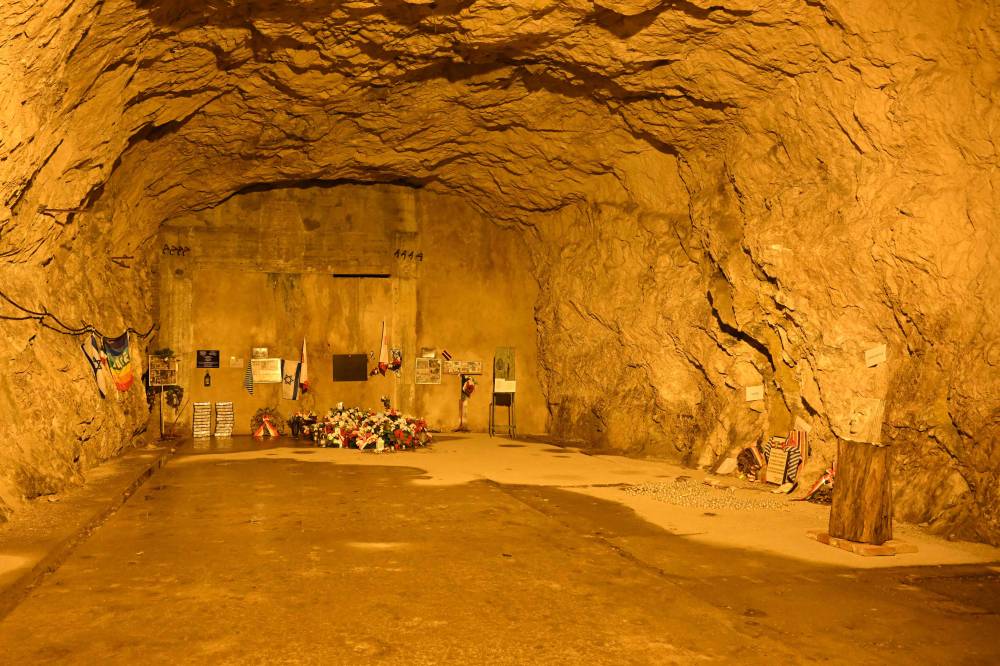
Shiota, 51, said she used red as the color of destiny and fate in Japan and of blood, which carries “everything, like family or nationality or religion.”
Having lived in Germany for 26 years, Shiota said she was well aware of the concentration camps that Nazi Germany built but had not been to Ebensee until she was asked to exhibit there.
With Japan allied to Nazi Germany originally, Shiota told the daily Die Presse she regrets that her native country has not done more work of remembrance so far.
The show titled “Where are we now?” runs until September in the Alpine Salzkammergut lake region, which has been elected European capital of culture for this year.
Previously, the dark, cold tunnels also hosted an opera composed in the Theresienstadt ghetto, north of Prague, where Jews were detained during World War II.
“I had never dared to enter (the tunnels) before because it seemed oppressive…But this installation allowed me to take the step,” Monika Fritsch, a 60-year-old content creator who came to the inauguration of Shiota’s installation, told AFP. —AFP
AFP is one of the world's three major news agencies, and the only European one. Its mission is to provide rapid, comprehensive, impartial and verified coverage of the news and issues that shape our daily lives.



